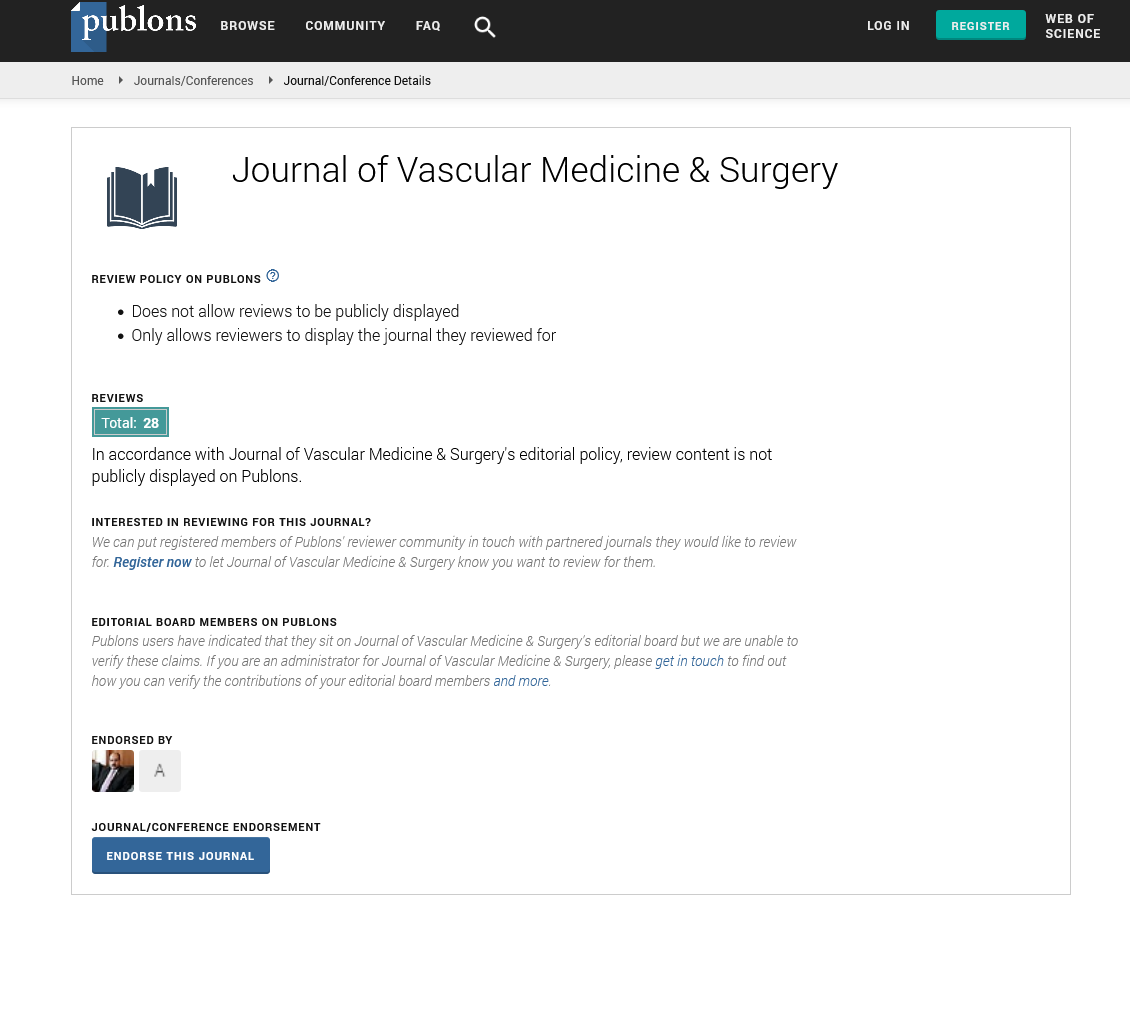Indexed In
- Open J Gate
- Academic Keys
- RefSeek
- Hamdard University
- EBSCO A-Z
- OCLC- WorldCat
- Publons
- Euro Pub
- Google Scholar
- SHERPA ROMEO
Useful Links
Share This Page
Journal Flyer

Open Access Journals
- Agri and Aquaculture
- Biochemistry
- Bioinformatics & Systems Biology
- Business & Management
- Chemistry
- Clinical Sciences
- Engineering
- Food & Nutrition
- General Science
- Genetics & Molecular Biology
- Immunology & Microbiology
- Medical Sciences
- Neuroscience & Psychology
- Nursing & Health Care
- Pharmaceutical Sciences
Abstract
Morphological Features of Abdominal Aortic Aneurysms and Association with Biomechanical Assessments of Aneurysm Wall Segments
Bruno Donega Constantin*, Erasmo Simao da Silva, Simon Lessard, Claude Kauffman and Gilles Soulez
This study focuses on the impact of geometric factors such as asymmetry, irregularity and tortuosity on the progression and rupture of Abdominal Aortic Aneurysms (AAA). The current surgical threshold based on maximum transverse diameter lacks precision, underlining the importance of understanding the aneurysmal wall's intrinsic biomechanical properties through destructive testing. We aimed to determine the influence of AAA morphology on its wall biomechanics by correlating preoperative tomographic geometries with uniaxial biomechanical test data of arterial fragments from open aneurysm repair. It’s an observational experimental and multicenter study, 47 individuals with AAA undergoing open repair had an anterior wall fragment tested uniaxially for load, stress, tension, strain energy, strain and thickness. Preoperative CT scans yielded 26 geometric indices, analyzed statistically using SPSS v28.0.1.
Results: Ruptured AAA fragments were significantly thinner (p<0.05). Positive correlations between the maximum Diameter (Dmax) and biomechanical resistance parameters maximum load (r=0.408), failure tension (r=0.372) and failure stress (r=0.360) were observed. Diameter/Height ratio (DHr) also showed positive correlations with maximum load (r=0.360), failure tension (r=0.354) and failure stress (r=0.289). DHr was dependent on and correlated with Dmax, with simple regression analysis indicating significance (p<0.05). No statistical differences in biomechanical and geometric parameters were noted between ruptured and unruptured AAAs.
Conclusion: The maximum diameter and diameter/height ratio correlate linearly and positively with resistance parameters of AAA wall fragments. While DHr depends on Dmax, other geometric indices show no correlation with biomechanical properties.
Published Date: 2025-10-17; Received Date: 2024-04-15

